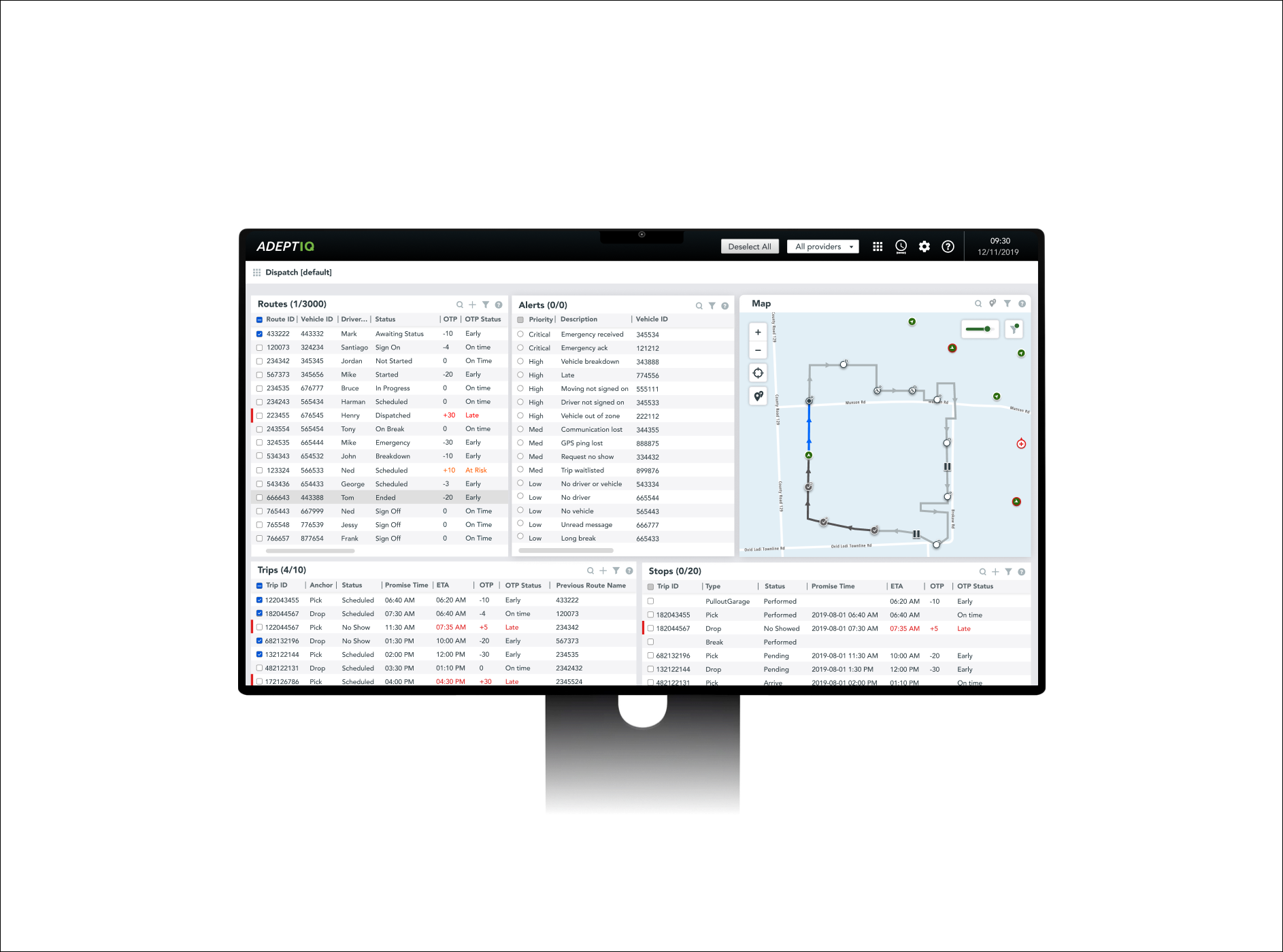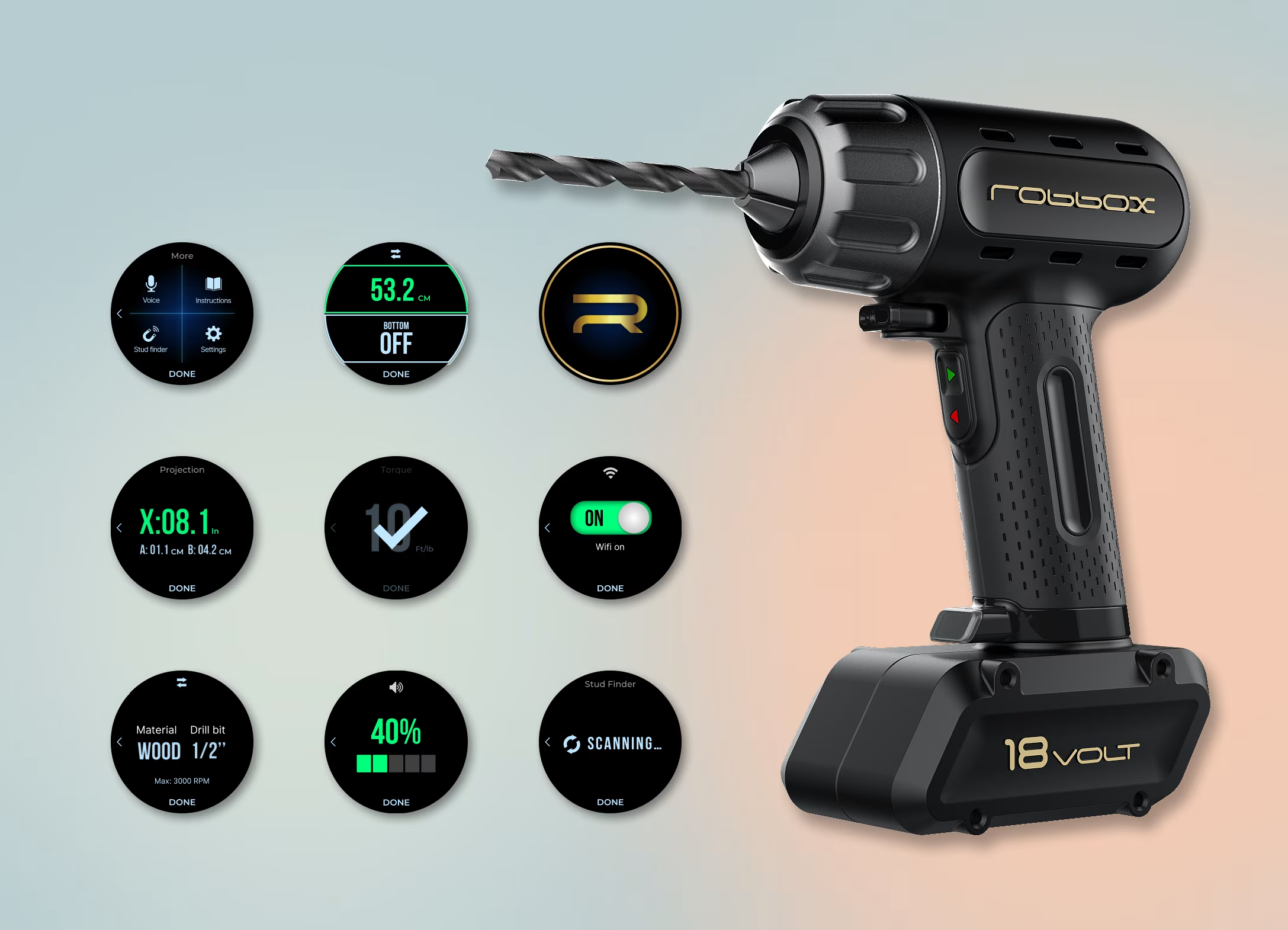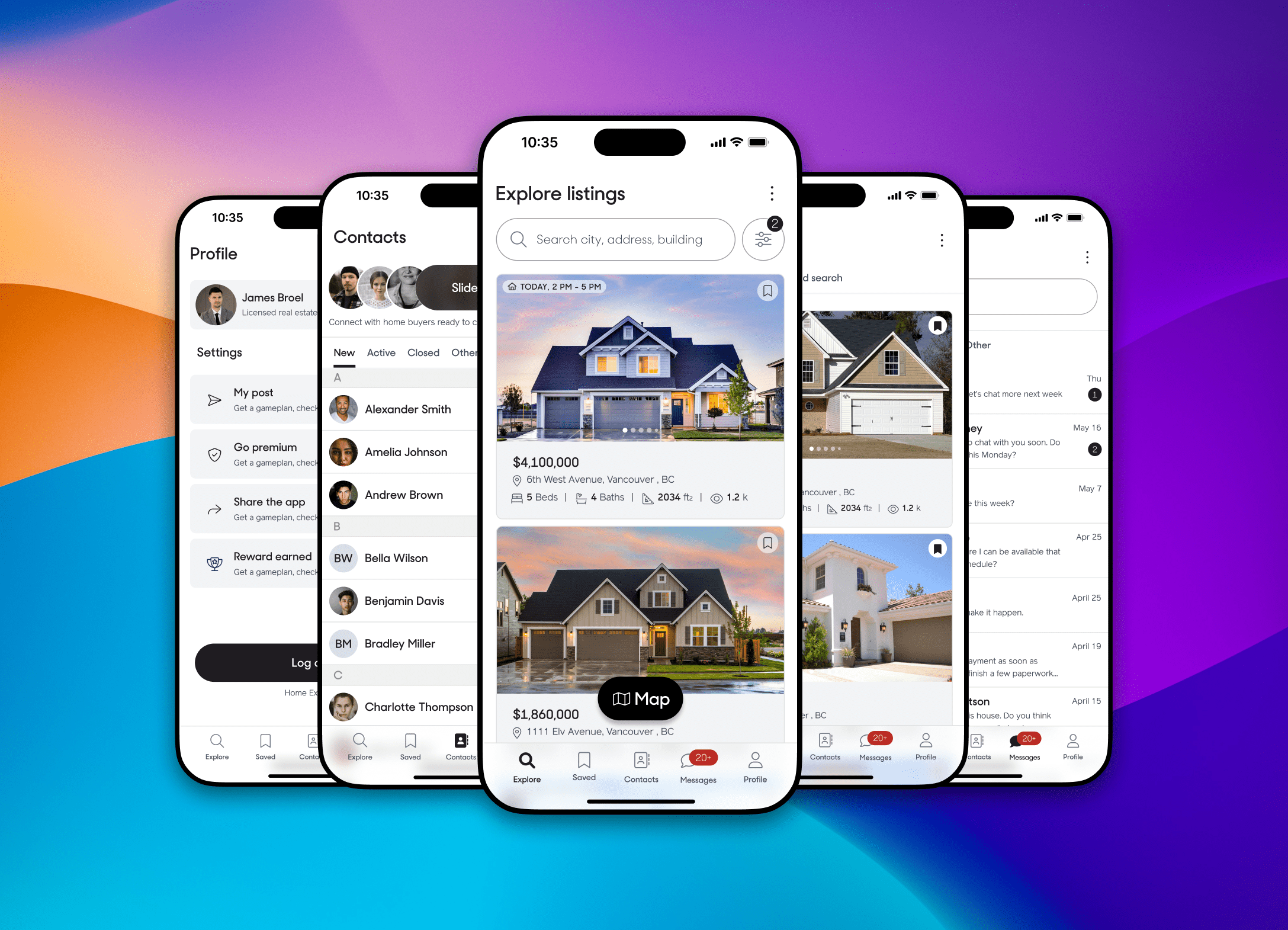My Role
In this case study I will just cover the redesign of the web Dispatch System although I was responsible for overseeing multiple projects, including the development of new features and functionalities for the in-vehicle Driver App on a tablet, and the Branded Passenger App on mobile.
Context
I was hired by DDS Wireless to modernize decade-old software used by the New York MTA and to design new features that help dispatchers keep transit routes on schedule. My role focused on improving how dispatchers manage vehicle operations—monitoring traffic, tracking vehicles in real time, and coordinating with drivers to ensure smooth, efficient service.
Problem
Dispatchers face high pressure due to tight schedules and desperately needed essential upgrades, notably a map for vehicle tracking and route visualization, real-time alerts for emergencies, customizable workspaces tailored to their preferences, and swift action capabilities to address issues promptly.
Legacy software lacked critical features
Dispatchers used an outdated map to track vehicles
In the
previous workspace, finding information quickly was difficult
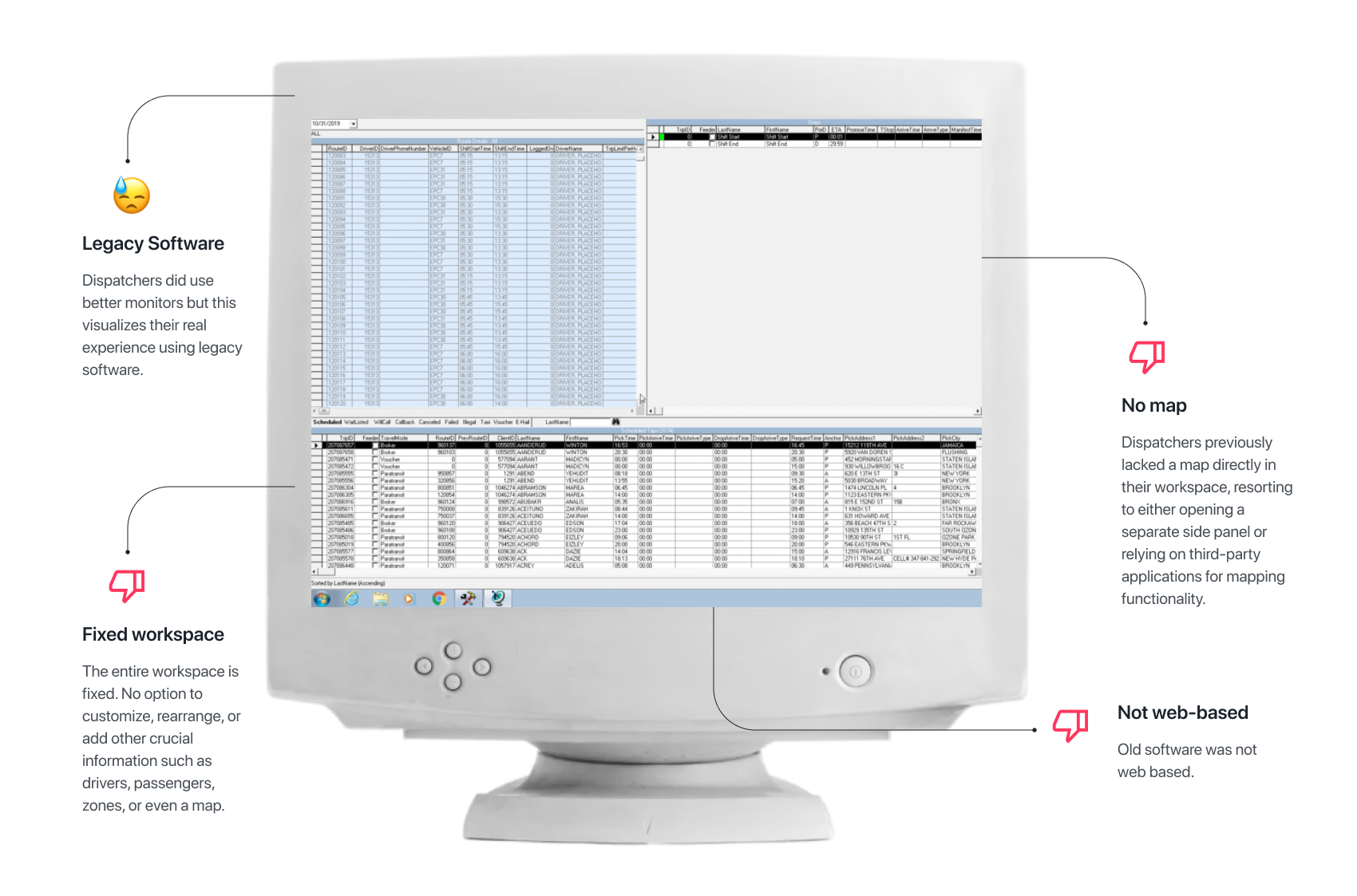
User needs
Who are The Dispatchers? I visited the New York MTA headquarters with my PM to conduct interviews with Dispatchers. The interviews provided invaluable insights into their daily tasks, challenges, and frustrations. By engaging with dispatchers, we we able to understand their workflow, validate assumptions about their needs and prioritize features.
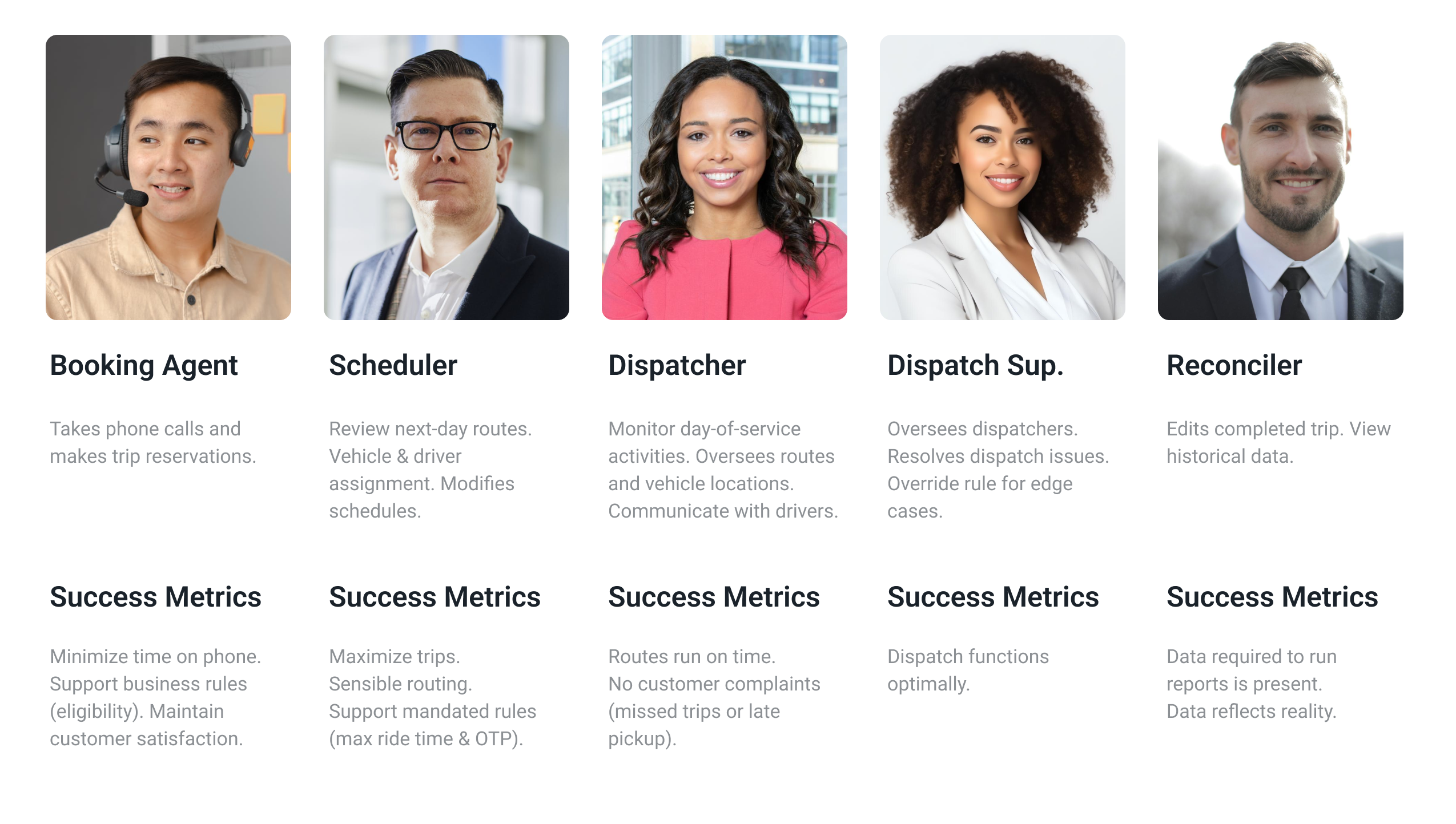
Collaboration
I collaborated closely with business analysts, product managers, and engineers to ensure alignment on project goals and requirements. This involved frequent discussions to clarify complex problems, whiteboarding sessions to brainstorm design solutions, and iterative feedback loops to refine the user experience.
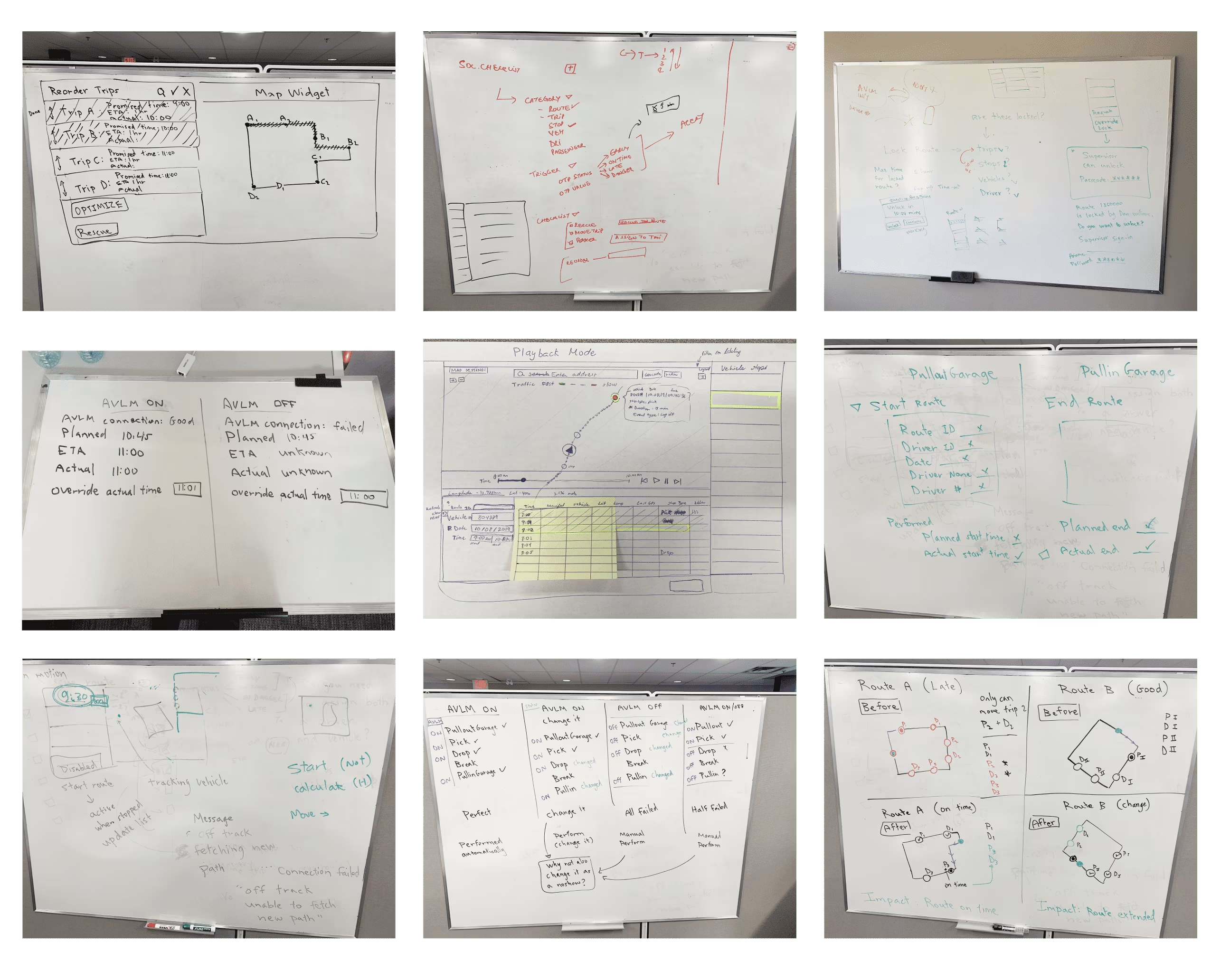
Solution
Developed a modern web-based Dispatch System designed to enhance usability and boost dispatcher productivity. The new system integrates an interactive map directly within the workspace, eliminating the need for third-party applications. Complex workflows have been streamlined, and the improved user interface offers a cleaner, more intuitive design, enabling dispatchers to work faster and more efficiently.
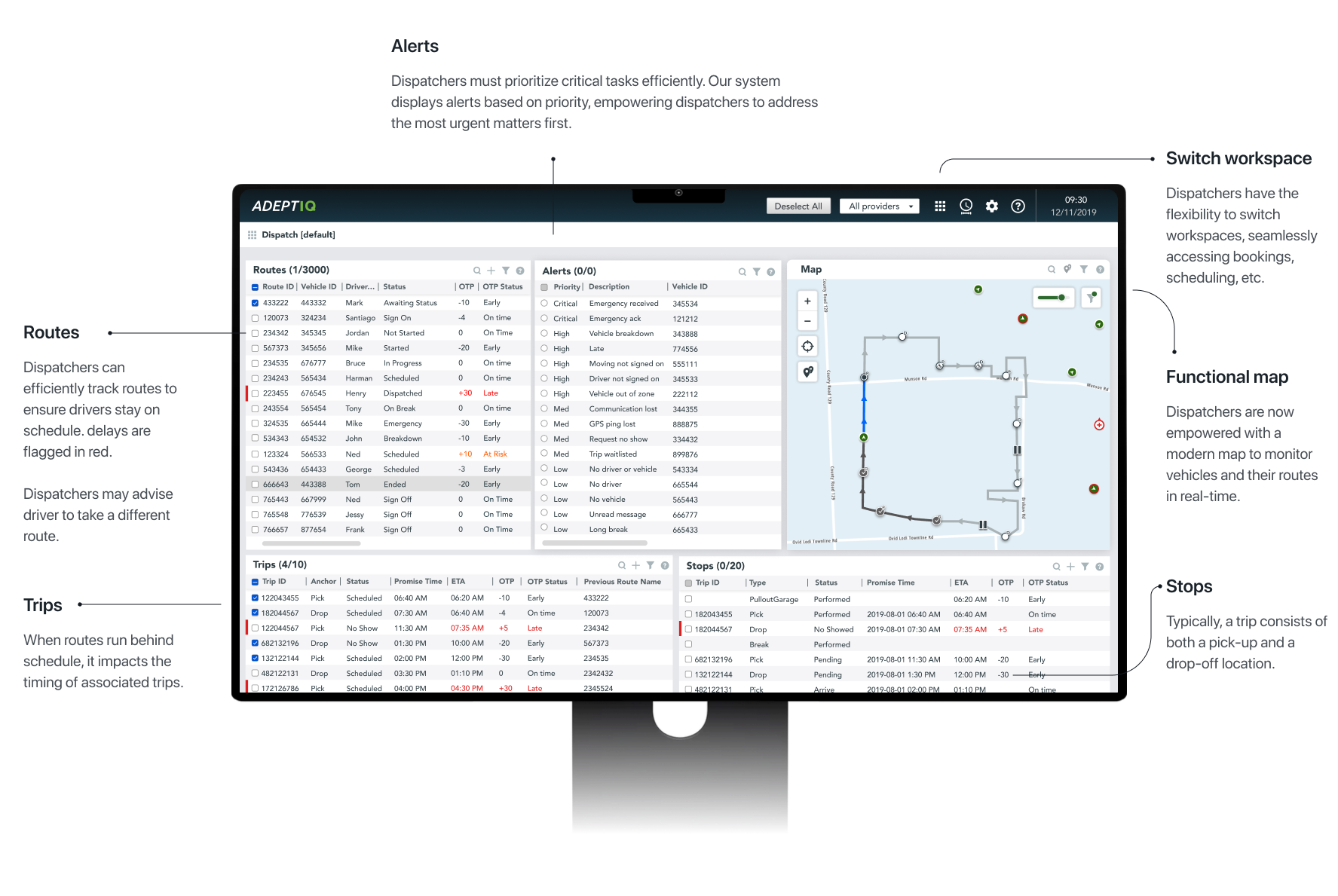
Before & After
Previously, dispatchers struggled with an outdated legacy software that lacked essential features, making it difficult to manage transit operations efficiently. The redesigned interface introduces a modern, customizable workspace with an integrated interactive map, real-time alerts, and powerful widgets. These enhancements streamline workflows, enabling dispatchers to quickly address transit issues and maintain schedules with greater ease and confidence.
Explore in 3D
Spin the model for some fun!
Key Results
Improved Productivity: Reduction in trip delays and quicker response times.
New User Onboarding Efficiency: Reduced training time and increased user confidence.
User Satisfaction: Dispatchers reported higher levels of satisfaction.
Enhanced Decision-Making: Real-time alerts and an interactive map improved operational efficiency.
Streamlined Workflows: Customizable workspaces allowed dispatchers to work faster and more effectively.
Increased Platform Adoption: The modernized system attracted more users and improved overall adoption rates.

Jason Gu
Director of Engineering at STANLEY Security
Vahid is one of the most experienced UX designers I have ever worked with. He is smart and a fast learner, I can always count on him to produce quality output in a very short time. He's a great asset to the team and as always we can move on quickly with design. I would highly recommend him as top product designer.

